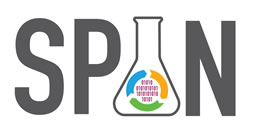Developing a Model of STEM-Focused Elementary Schools (eSTEM)

Early learning experiences in Science, Technology, Engineering and Mathematics (STEM) are critical in preparing elementary school students for STEM learning in middle and high school, as well as for future careers in STEM-related fields.
However, limited exposure to STEM in the elementary years can lead to reduced STEM interest, course taking, and achievement in the later grades. STEM-focused elementary (eSTEM) schools represent one approach to providing substantive STEM learning experiences for all students.
To address the challenge of lack of access to quality STEM experiences for students, particularly those from low-income and underrepresented groups, education researchers from SRI and George Mason University are conducting a multi-year exploratory study under funding by the National Science Foundation (NSF). The goal of the study is to develop a logic model - based on rich cases of exemplary eSTEM schools - to inform the design, implementation, support, and scaling of eSTEM schools.
Study Design
The study focuses on STEM-focused elementary schools where student enrollment is based on residence or interest, rather than selective or exclusive schools such as private charters or selective magnet schools. To develop a comprehensive logic model for eSTEM schools, researchers are collecting key data from five exemplar schools that were recommended by experts in elementary education. Using a case study replication design, the project team will examine the designs and implementation of these successful eSTEM schools in their varied contexts.
Through an extensive iteration process, a common model of the five schools will be methodically reviewed by eSTEM school leaders to develop a final logic model that provides both a common vocabulary and shares best practices related to STEM in elementary education. The goal is to produce actionable findings that will support the development of future STEM-focused elementary schools as well as research on their effectiveness going forward – and ultimately to provide opportunities for all students to build interest in and prepare for STEM careers.
This material is based upon work supported by the National Science Foundation under Grant No. DRL-1621005. Any opinions, findings, and conclusions or recommendations expressed in this material are those of the authors and do not necessarily reflect the views of the National Science Foundation.
Ann House, SRI International
Vanessa Peters, SRI International
Erin Peters-Burton,f George Mason University
Julie Remold, SRI International
